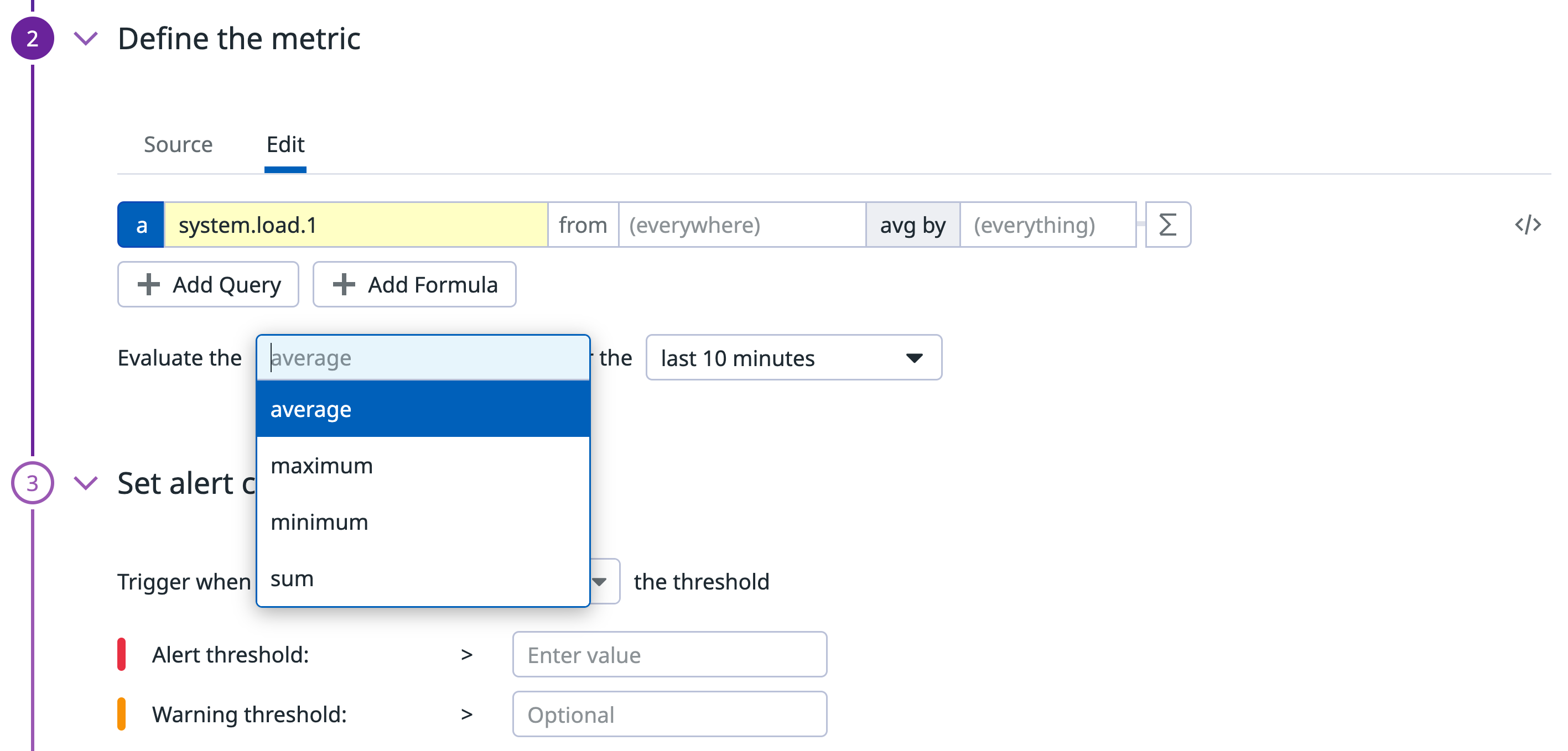- Essentials
- Getting Started
- Datadog
- Datadog Site
- DevSecOps
- Serverless for AWS Lambda
- Agent
- Integrations
- Containers
- Dashboards
- Monitors
- Logs
- APM Tracing
- Profiler
- Tags
- API
- Service Catalog
- Session Replay
- Continuous Testing
- Synthetic Monitoring
- Incident Management
- Database Monitoring
- Cloud Security Management
- Cloud SIEM
- Application Security Management
- Workflow Automation
- CI Visibility
- Test Visibility
- Test Impact Analysis
- Code Analysis
- Learning Center
- Support
- Glossary
- Standard Attributes
- Guides
- Agent
- Integrations
- OpenTelemetry
- Developers
- Authorization
- DogStatsD
- Custom Checks
- Integrations
- Create an Agent-based Integration
- Create an API Integration
- Create a Log Pipeline
- Integration Assets Reference
- Build a Marketplace Offering
- Create a Tile
- Create an Integration Dashboard
- Create a Recommended Monitor
- Create a Cloud SIEM Detection Rule
- OAuth for Integrations
- Install Agent Integration Developer Tool
- Service Checks
- IDE Plugins
- Community
- Guides
- API
- Datadog Mobile App
- CoScreen
- Cloudcraft
- In The App
- Dashboards
- Notebooks
- DDSQL Editor
- Sheets
- Monitors and Alerting
- Infrastructure
- Metrics
- Watchdog
- Bits AI
- Service Catalog
- API Catalog
- Error Tracking
- Service Management
- Infrastructure
- Application Performance
- APM
- Continuous Profiler
- Database Monitoring
- Data Streams Monitoring
- Data Jobs Monitoring
- Digital Experience
- Real User Monitoring
- Product Analytics
- Synthetic Testing and Monitoring
- Continuous Testing
- Software Delivery
- CI Visibility
- CD Visibility
- Test Optimization
- Code Analysis
- Quality Gates
- DORA Metrics
- Security
- Security Overview
- Cloud SIEM
- Cloud Security Management
- Application Security Management
- AI Observability
- Log Management
- Observability Pipelines
- Log Management
- Administration
Monitor aggregators
Overview
Configure your monitor query to send alerts based on how the data is aggregated with one of the four aggregation methods: average, maximum, minimum, and sum. For this guide, take the same example metric values over a 10 minute evaluation window and apply the different aggregators to see how each monitor would react.
All the examples assume that:
- Queries are calculated with the
classic_eval_path. - The monitor alerts when the values are above a certain threshold.
Average
The monitor takes the values in the evaluation window and calculates the average of all the data points. This average value is compared to the defined threshold. A common use case for this aggregator is checking if the metric data is too high or too low.
Example
You want a monitor to send a notification when the average over the past 10 minutes goes over 30. What state is the monitor in at minute 3:10?
$$(\10+15+12+8+11+14+13+25+37+45+50)/10 = 24$$
Answer
OK state, this monitor is not going to alert.
Maximum and above
The monitor takes the values in the evaluation window and compares each value against the defined threshold. If any single data point in the evaluation window is above the threshold, the monitor will alert.
For monitors configured to alert when below the threshold, the behavior is reversed.
Example
You want a monitor to send a notification if at any point in the last 10 minutes the value of the metric is above 40. What state is the monitor in at minute 3:10?
You want a monitor to send a notification if at any point in the last 10 minutes the value of the metric is above 50. What state is the monitor in at minute 3:10?
Answer
ALERT state, the last two values in the past 10 minutes are 45 and 50. This monitor is going to alert.
OK state, the threshold is 50 and the last value is not above 50. This monitor is not going to alert.
Minimum and above
The monitor takes the values in the evaluation window and compares each value against the defined threshold. All values in the window must be above the threshold. If the minimum value is above the threshold, that means all points in the window are also above the threshold.
For monitors that are configured to alert when below the threshold, the behavior is reversed.
Example
You want a monitor to alert if the minimum metric value is above 10 at any point in the last 10 minutes. What state is the monitor in at minute 3:10?
Answer
OK state, the value at 3:00 (10) and 3:03 (8) is NOT above 10.
Sum
The monitor takes the values in the evaluation window and compares the sum value against the defined threshold. This aggregator adds the value of each data point, not the number of data points. A use case would be for a metric that counts occurrences of errors or restarts. This is why as_count() metrics have to use the sum aggregator. For more information, see the as_count() in monitor evaluations guide.
Example
You want a monitor to send a notification when the sum of values over the past 10 minutes goes over 250. What state is this monitor in at minute 3:10?
$$10+15+12+8+11+14+13+25+37+45+50 = 240$$
Answer
OK state, this monitor is not going to alert.
Visualizing aggregators
You can see different results depending on the aggregation method you are using in your query and your evaluation aggregation. The aggregation methods below use the the same metric. You can see how each method affects the way the metric is aggregated in a timeseries.
| Aggregation | Resulting graph |
|---|---|
Average (avg by): average value of the metric | |
Maximum (max by): maximum value of the metric | |
Minimum (min by): minimum value of the metric | |
Sum (sum by): total of all metric values added up |
Further Reading
Additional helpful documentation, links, and articles:

![Example metric values over a 10 minute evaluation window [10, 15, 12, 8, 11, 14, 13, 25, 37, 45, 50]](https://datadog-docs-staging.imgix.net/images/monitors/guide/monitor_aggregators/metric_values_example.6afd8f227193b49343de20dbaab6bdca.png?auto=format)




